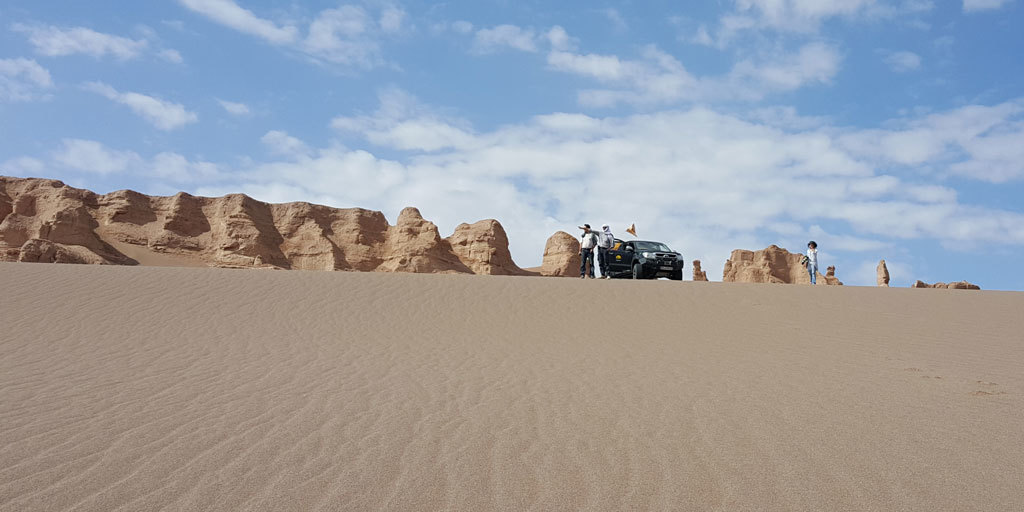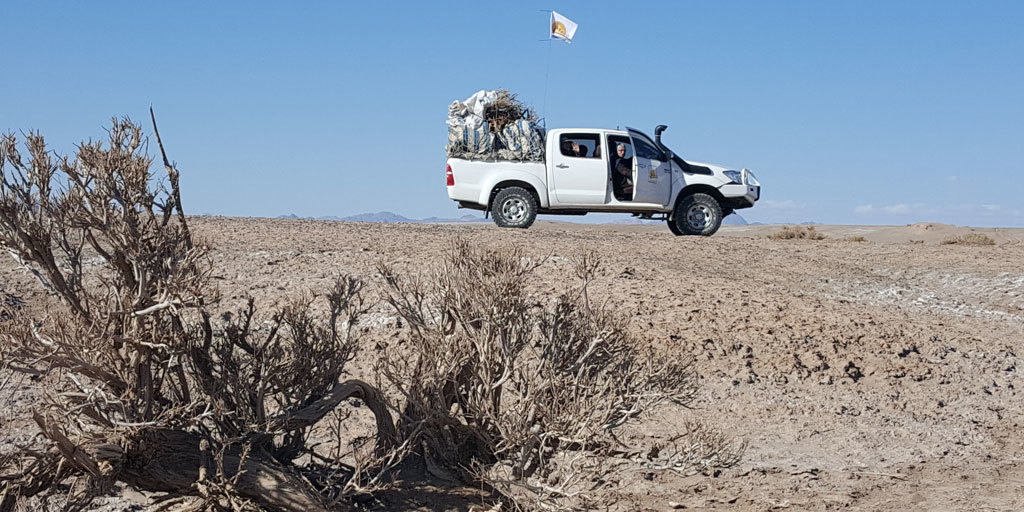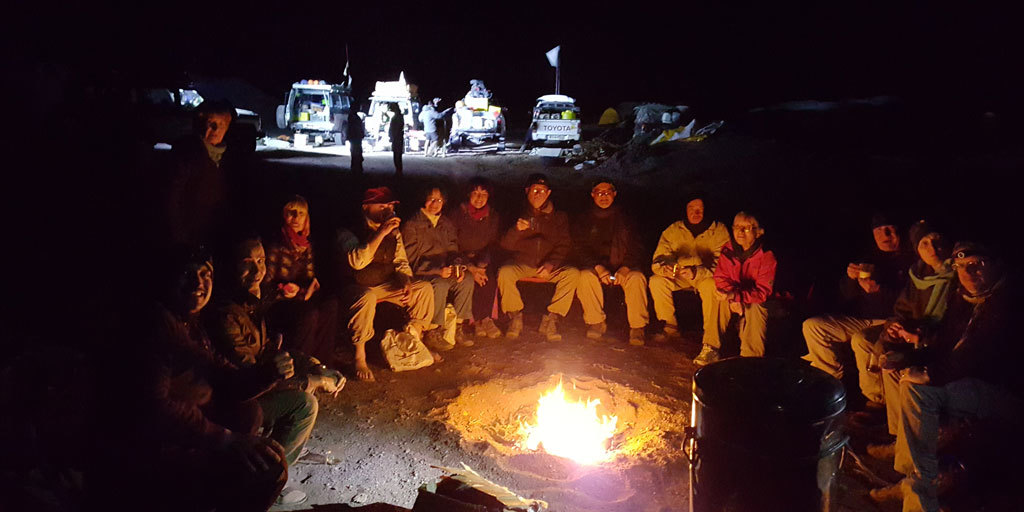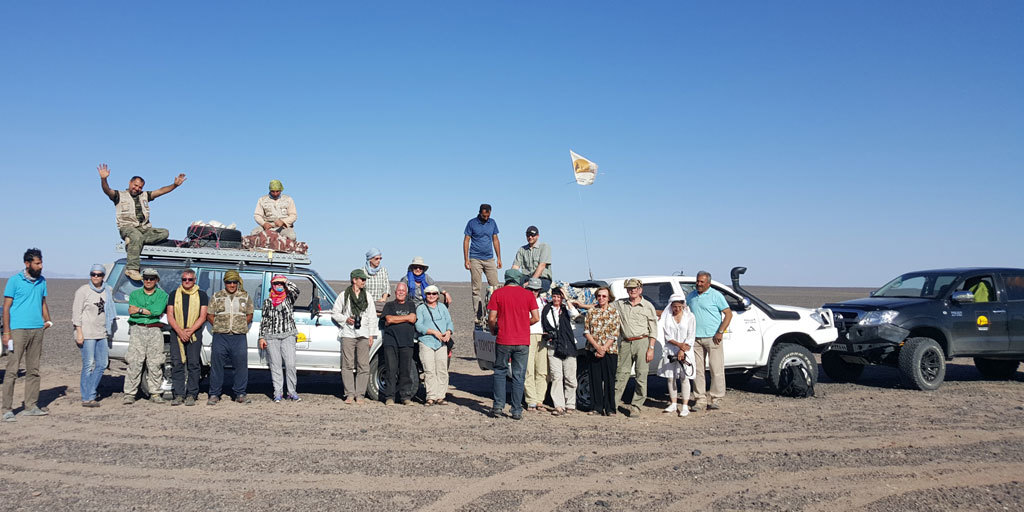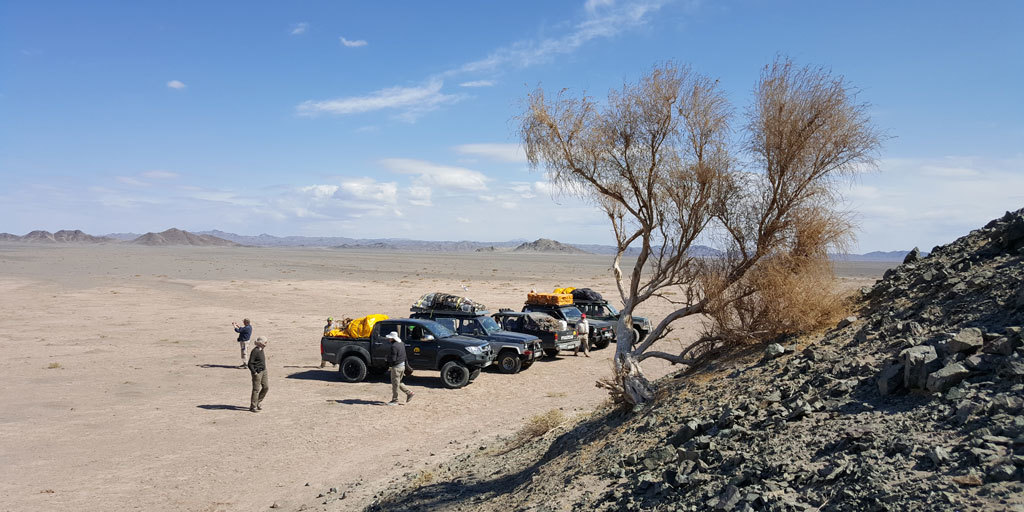1st Day
Tehran | Arrival at IKIA International Airport, meet and greet and transfer to the hotel, early check in and rest. Visiting some highlights of Tehran including Iran Ancient National Museum (Iran’s mother museum), The museum containing prestigious relics influential in shaping the world’s culture and civilization. (Closed on holy memorial ceremonies.) Golestan Palace (The Rose Garden Palace) one of the oldest historic monuments) belonging to a group of royal buildings in Tehran, UNESCO World Heritage. visiting traditional Bazaar (closed on Fridays and Thursdays afternoon) O/N Tehran (Hotel –B -D) |
2nd Day
Tehran | Full day city tour of Tehran, including Sadabad Palace Museum
(3 museums),Niavaran Palace, Tajrish Traditional Bazaar, and Milad Tower, evening you might also visit Artists’ House in the remaining time, O/N Tehran (Hotel –B -D)
|
3rd Day
Tehran-Kashan-Maranjab | Driving to Kashan, changing the vehicles, heading to Maranjab Desert,
Short time trekking in desert, visiting Salty Lake and the beauties of sandy hills and the eye catching view of desert, & its sunset and starry sky, today we are going to see one of the spectacular phenomena that may not exist in many countries of the world. It’s a river that becomes impossible to pass when raining hard and when dry forms unique salty phenomena. You can pass the river by car or without it and enjoy the salty features. Also visit one of Iran’s architectural monuments; Maranjab caravanserai and Maranjab’s Qanat and be impressed by the water management system used at that time. O/N Maranjab (Camp-B-L-D)
|
4th Day
Maranjab-Rig-e Jen Desert National Park | Rig-e Jen; the land of fairy tales.
Today we continue our walking & safari journey to the south of Rig-e Jen. It’s one of Iran most unexplored geographical phenomena. The view of the burning sand dunes is a great incentive that attracts nature lovers to this desert. Experience and travel the old style of travelling by carvans and also visit the unique vegetation and high sands by the river. O/N Desert (Camp B-L-D)
|
5th Day
Rig-e Jen camp 1 | We will continue our safari toward south, to visit the desert, you should pass the Desert National Park which is an example of an arid and desert ecosystem.
Low rainfall in this area does not allow agricultural activities, growing of some of the plants and the species of animals is possible. For this reason, the park has special animal and plant communities that have amazingly coped with the limited resources and the environmental limits and also have been developed somehow due to the protection. O/N Rig J (Camp2 B-L-D)
|
6th Day
Rig-e Jen camp 2
| Continuing the safari towards the south of Rig-e Jen. Rige-Jen located in the heart of the desert, contains a broad range of dunes and salty marshes. This area is one of the world’s most difficult areas to pass. O/N Rig J (Camp3 B-L-D) |
7th Day
Rig-e Jen camp 3 | Visiting the sandy walls of Rig-e Jen from north to south, that are approximately 100 km, visiting the sandy northern mountains , passing the center of Rig-e Jen, sightseeing the puffy ground and salty marshes, O/N Rig J (Camp4-B-L-D) |
8th Day
Rig-e Jen camp 4 | Heading to East, experiencing the relaxation, peace and solitude of the desert. A short Safari and then walking through the desert to be feel the wind sands and the extraordinary vegetation. O/N Rig J (Camp5-B-L-D) |
9th Day
Rig-e Jen camp 5 | Heading to East, visiting Dom-e Rig area with approximately 40 km and Haj Bagher Alam located on the south of Rig-e Jen. O/N Desert (Camp6- B-L-D) |
10th Day
Rig-e Jen -Farahzad | Driving to Farahzad Village, a village near Mesre desert that is home to only two families and camel breeding is its habitant’s job. Farahzad is surrounded by sand dunes. The houses of the village are built is in introvert architectural style. O/N Farahzad |
11th Day
Farahzad – Mesre Desert | Driving to Mesre Village, a village around Iran Central Desert, which is surrounded by sandy hills, sightseeing of wonderful beauties of the region and villages on the edge of the desert, awhile walking in sandy hills, spending an exciting day in Mesre village also experiencing camel riding that takes us to the far east and gives us a feeling of how old people traveled with caravans, spending the night in camp. O/N Mesre (Camp-B-L-D) |
12th Day
Mesre Desert-Aroosan-Khur | Continuing the trekking and camel riding till we reach Aroosan village,(start of the safari) a village so tranquil in the heart of the desert surrounded by Aroosan mounts with an exciting subterranean that is home to only two people with extraordinary gardens , driving by 4*4 cars , getting to Khur area with great date trees, 0/N Khur,( Hotel B- D) |
13th Day
Khur-Tabas | Driving to Tabas, visiting one of the greatest salty deserts of Iran; Kavir-e Tabaghe , taking a walk aand feeling the desert and then heading to Tabas,awhile sightseeing of Tabas including Golshan Garden ( a garden where two famous Pelicans live) , O/N Tabas (Hotel-B-D) |
14th Day
Tabas | Full day excursion of the villages around Tabas to visit two amazing complexes that has formed the way of life of the people as well as the method of collecting water. One of which is a pre-Islamic house and the other one the famous Shah Abbasi Tagh Band. The structure, is a modern dam with a monitoring system of the hot and cold water outlet which is one of the most exciting things you will see today.
Tagh Band-e Shah Abbasi, a kind of Water supply system belonging to Sasanid, Safavid & Qajar; the usage of which as a water divider & controller was continued even at Mohammad Reza Pahlavi Era. To visit this fantastic architecture, we’d do a short trek (~2 hours), alongside & in the shallow warm & cool waters flowing in a beautiful valley, ending to their very springs named Morteza Ali. During this day excursion the traditional hand-excavated cave style shelters at mountain heart, named as Khanehay-e Gabre(Zoroastrian houses), used by pre-Islam Zoroastrians, (~ 700-800 years ago) will be also visited; according to some archeologists opinions these huts date back to Mithraism Belief, O/N Tabas(Hotel-B-D)
|
15th Day
Tabas- Nayband Village | Driving towards Esfahak village, imagined as a village still being alive at a fixed time in the past, after Tabas earthquake in 1978; awhile walking and sightseeing of the village & the beautiful Saffron Farms, then heading to Nayband spectacular village, with its wonderful apartment style structure; it is an amazing green village with various corps from orange and rice to dates, imagined as a green clothed bride placed at the desert. Awhile walking in the village, sightseeing & getting familiar with people life style of this area. Swimming in thermal water of Nayband, named Dig-e Rostam (Rostam-an Iranian Mythic Hero-Pot) could be an optional choice at the end of this day , (if there’s enough time) , during a meeting, getting familiar with desert logistic team, starting your full day Safari (4×4 W drive) of Lout Desert North West, the start of 4×4 W drive in Lout Desert towards the heart of desert, passing through the flat monotonous Hamada Plains; from which, we reach the by-side mountains of this zone,O/N Nayband Village(Tent/Local House-B-L-D) |
16th Day
Nayband- Lut Desert/camp 1 | Today we are heading to one of the most famous deserts in the world; the Northern Lut, a desert so unknown to the adventurous tourists from around the world, desert with Geo touristic phenomenon that amazes you. You are among the first and luckiest geo-tourist that enter this area from the northern side. O/N Desert (Camp 1/tent B-L-D) |
17th Day
Lut Desert / camp 2 | Starting the drive towards the very heart of Lut desert, & from there to South, passing through Hamada & visiting the geological terrains of this region, you will visit two pheromones on this day: Gypsum and Hamada Desert
Gypsum is formed when the water passes through the salt and clay ground then reaches to a very high density. Due to the continuous pressure, Gypsums appear on the surface of Lut Desert as white stone beads or in size of 100 meters.
Hamada is a large flat land in Lut desert and mirages can always be seen in it due to the flatness of the area. So if GPS or other navigation accessories are not available, you will easily lose the geographical directions. Small stones that are carried by the wind for years and are placed on the sand and soil of the area.
O/N Desert (Camp 2/tent B-L-D)
|
18th Day
Lut Desert / camp 3 | Today we will continue are adventurous safari to the southeast so we could watch the amazing sunset of the desert. O/N Desert (Camp 3/tent B-L-D) |
19th Day
Lout Desert / Camp 4 | Today, we pass thorough some other parts of central Hamada in Lut, visit the Sahara and the flat plains and watch the amazing stars of the desert sky in the high Malek Mohammad mountains, O/N desert (Camp 4/tent B-L-D). |
20th Day
Lut Desert / Camp 5 | Driving to experience the phenomena of the high sandy hills.
The high sandy hills have a height of 520 meters. These sands are one of the signs of wind erosion processes in the region. The relative smoothness, poverty of vegetation, prevailing winds and loose alluvial formations are the most important causes of wind erosion.
The sands being displaced by high winds known as the 120-day winds of Sistan and placing them in the east of Lut forms these sandy hills which are amazing Geo-touristic pheromones, O/N desert (Camp5/tent B-L-D). |
21st Day
Lut Desert / Camp 6 | Continuing our trip to see the 2005 point.
The 2005 point:
United States of America NASA research results suggest that the Lut Desert in Iran is one of the hottest places on Earth. According to satellite data from NASA in 2005, the surface temperature of Lut desert have been 70.7 degrees Celsius.
This temperature is the highest temperature recorded from the surface of all the satellite data. That’s why it is called the 2005 point. (Camp 6 /tent B-L-D).
|
22nd Day
Lut Desert / Camp 7 | Continuing the route towards West, visiting South West Kalouts, Where the sand and Kalouts are mixed together, the wind blow has gave the sands interesting star form. O/N Desert (Camp 7 /tent B-L-D). |
23rd Day
Lut Desert / Camp 8 | Continuing the trip towards West, to visit the Kalouts plus Zaban-e Mar Valley, O/N Desert
Zaban-e Mar is a huge gap with a length of 9 km with walls about thirty meters high in the west of Hamada Sahara in Lut desert.
The geo-morphological condition at an altitude of 190 meters above sea level is formed due to lack of vegetation that can be seen in most parts of the Lut desert.
This gap can be the home to strange endemic animals of the area, including sand fox.
It has probably been formed by water drains or Lut Sistan great flood that has taken place at old times.
The valley is named Zaban-e Mar (Snake Tongue) because of the similarity of the area to a snake tongue with the end split in two. (Camp 8/tent-B-L-D).
|
24th Day
Lut Desert / Camp | Today we are going to visit a unique area of Kalouts and valleys between them that are signs of the power of the wind in this area.
Kaluts are Lut desert sceneries that spread from the North west to South east
Their length is about 250 km and the width about 70 km.
It is written in historical manuscripts that no one has passed through it and it’s still unknown and there’s only information about the areas surrounding it.
The reasons of the anonymity are two natural phenomena in the West and East of Lut. Kalout in the West and the big Rigestan in the East are two factors that limit the eastern and western regions connection. That’s why no one used to travel from West to East of Lut. The only way that passed through Lut was Rahe No (The new way) which is between two natural complications one of which is the wind sands of the eastern Lut and another one Hamada Desert. (Camp 9 /tent B-L-D).
|
25th Day
Lout Desert / Camp 10 | Today we’re heading to see two geo-touristic phenomena of Lut desert. First we will visit Rood Shoor and then Gandom Beryan.
Rood Shoor Lake forms layers of salt due to the passing the North Lut and a variety of minerals.
Image of ovate hills and Tak Kalouts like a little island in the midst of the waters, gives the place a special view. Rudshur salt’s density is so high especially in low- water years that salt crystals are always formed on the sides of the river.
The area is covered with Igneous rocks and Black lava rocks with about 4 meters in height that cover the upper surface of the dusty walls.
Coexistence of Black basalt rocks and yellow base soil is one of the amazing phenomenon that give the area indescribable beauty. The name has been given to the area probably because when the Carvans placed their carriage on the ground between Quhistan and Shahdad, the wheat was placed on the basaltic rocks and was roasted due to the great heat. That’s why the name is Gandom Beryan which literally means Roasted Wheat. , O/N desert (Camp 10-B-L-D) |
26th Day
Camp 10 (Shahdad) | Driving toward Shahdad town, en route visit of Roud Shour/ Salty River, salty polygons plus North West Kalouts, also one of the endemic plants of the region, named Nebka, arrival & O/N Shafi Abad Village/ Shahdad
Nebkas or Tamarisk trees are endemic trees of Lut area due to their unique life systems, protection and reproduction. Then we move towards the old city of Shahdad with a 6000-year-old civilization. A city with kind and hospitable people. Tropical agricultural products in Joftan Mountains near the city of Shahdad and humid winter temperature will be an inexplicable experience. (Local House/Dormitory-B-L-D)
|
27th Day
Shahdad-Mahan- Kerman- Tehran | Driving towards Mahan, via a route passing of high mounts of Joftan, sightseeing of Mahan, including Bagh-e Shazde (Prince Garden) UNESCO World Heritage Site, and Shah Ne’amat-ol-lah-e Vali Tomb, heading to Kerman & transfer to the airport to fly to Tehran, transfer to the hotel and rest, O/N Tehran(Hotel-B-D) |
28th Day
Tehran- IKIA | Transfer to IKIA Airport to board the home bound flight, & end of the tour. |

